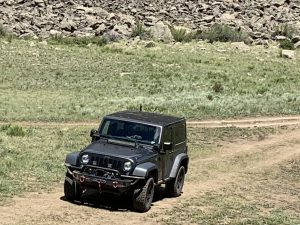
Before going offroad there are a few things to consider.
When to use 4 Wheel Drive
Many off-road vehicles have different modes, such as 2H, 4H, and 4L. It is important to use the correct mode depending on the driving conditions. For street and highway driving, always use 2H. If you use 4H or 4L on these surfaces, it could damage your vehicle’s driveline and cause increased tire wear. To ensure that you are using the correct mode for your vehicle, always refer to your owner’s manual.
On slippery roads due to snow or ice, switch to 4H. When traveling off-road on dirt trails or loose gravel, switching to 4H is recommended.
When driving in rough terrain, steep trails, or in situations where more torque is required at speeds below 15 MPH, it is recommended to use the 4L mode. It is important to always refer to your vehicle’s owner’s manual for the maximum recommended speed when using 4L, as exceeding this speed could potentially cause your engine to over-speed. Generally, when using 4L, the engine speed will increase by approximately three to four times that of the engine speed when using 2H or 4H mode.
Tire Pressure
It is important to always maintain the recommended tire pressure while driving on the highway, as running on low pressure can cause uneven tire wear or potential tire failure.
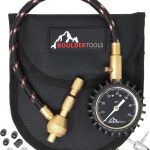
After you drive onto an unpaved surface, reduce the air pressure of your tires to 25 psi. This will help your tires to 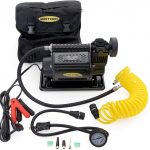 have a larger surface area and increase their grip on the terrain. If you are driving on a sandy surface or a difficult trail, reduce the air pressure to 15 psi. A deflation tool can make this process easier for you.
have a larger surface area and increase their grip on the terrain. If you are driving on a sandy surface or a difficult trail, reduce the air pressure to 15 psi. A deflation tool can make this process easier for you.
Don’t forget to air up your tires once you’re back on the asphalt. Therefore, having a compressor as part of your trail tools is essential.
Situational Awareness
One of the best tools to have on the trail is situational awareness. Be aware of your surroundings, don’t just focus on the trail, but look to the left and right sides of the trail as well. Never drive where you cannot see. If you are approaching a crest in the road and you are unable to see the trail over the front of your hood, get a spotter to guide you. Please do not assume that the trail continues straight or you will have time to adjust when it comes back into view. The trail may take an immediate turn with a dropoff straight ahead.
Move steadily
It is advisable to drive slowly and steadily. Accelerating and then braking suddenly can lead to poor traction. Remember, driving is not a race. Even a road that was once smooth can develop a washboard pattern over time. Driving too fast can cause discomfort to you and your passengers, as well as increase the chances of losing traction as you bounce down the trail.
Necessities
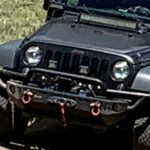 When you go out on a trail, it’s essential to be prepared for almost anything that may come your way. Make sure to bring all the necessary tools required to deal with any situation and learn how to use them proficiently. Also, ensure that you have a good quality jack and practice raising and lowering your vehicle before hitting the trail. Trying to figure out how your Hi-Lift jack works on the trail is not a smart move. So, be well-prepared and stay safe..
When you go out on a trail, it’s essential to be prepared for almost anything that may come your way. Make sure to bring all the necessary tools required to deal with any situation and learn how to use them proficiently. Also, ensure that you have a good quality jack and practice raising and lowering your vehicle before hitting the trail. Trying to figure out how your Hi-Lift jack works on the trail is not a smart move. So, be well-prepared and stay safe..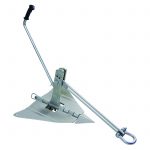
If you find yourself stuck, a winch can be an invaluable tool. However, there may not always be something nearby to attach it to. That’s where a sand anchor comes in handy. By attaching your winch cable to the anchor and reeling it in, the anchor will dig into the ground, allowing for self-recovery. This is a nifty tool to accompany your winch.
Limits
One of the most inportantthings to have on the trail is common sense and humility. If the trail gets too difficult for your skill level there is no shame in turning around. Do not be the person who is dying to get somewhere. Offen those are the ones that end up getting stuck, hurt, or worse. Remember this analogy. We all carry two buckets, a luck bucket, and an experience bucket. The luck bucket is full of water.When you do something that you probably shouldn’t have you take a cup out of your luck bucket and put it in your experience bucket. Hopefully, when your luck bucket is empty, your experience bucket is full enough to keep you from doing something foolish and getting into trouble.
Offroad Trails
Below you will find a map of Offroad Trails near South Fork CO. You can drag the map to explore other marker locations or use the zoom in and out feature with the + and – signs. By clicking on each marker, you can access information about the hike like its profiles, pictures, and other details. For a list of Offroad Trails with links, click on South Fork Offroad.